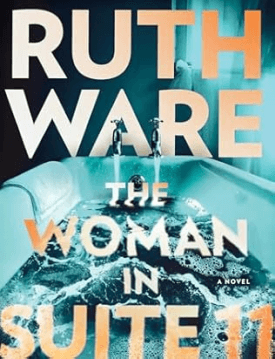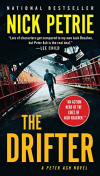Apache Books In Order
Book links take you to Amazon. As an Amazon Associate I earn money from qualifying purchases.Publication Order of Apache Books
John Harvey is a prolific British poet and novelist of more than a hundred books including several detective and crime series, poetry and a collection of short stories. He has dramatized novels by A.S. Byatt and Graham Greene and has written many scripts for British television and radio. John Harvey penned almost 50 westerns under various pen names before he went on to create the award-winning Charlie Resnick crime fiction and the Frank Elder series.
The Piccadilly Cowboys was a group of British writers who, often under assumed names, wrote close to three hundred “Western” novels in the tradition of pulp fiction during the late 1970’s. John Harvey, Angus Wells, Terry Harknett, Mike Linaker, Fred Nolan, Kenneth Bulmer, Laurence James are a few of those now well-known writers who sharpened their writing skills by writing sometimes surprisingly violent and Western sagas during their early years.
“Westerns” have been a staple in books, theater, art since the late 1880’s, and the genre became firmly established in the film industry during the 1930’s when a Western flick’ launched John Wayne on his road to international fame and fortune.
The Apache series was written long before Lonely Hearts, the first of Harvey’s acclaimed Charlie Resnick novels. Pinnacle, who published George G. Gilman’s Edge series, published 27 books in the Apache series in the USA which made it one of the longest-running “Piccadilly Cowboy” series. NEL published twelve of the Apache books in the UK. All of these books were written under the pen-name of William M James and were co-authored with Harvey, Laurence James, and Terry Harknett.
Like some of Harvey’s later books, this series is set in the frontier towns, saloons, dusty isolated ranches and military forts of the Wild West. The harshness of the desolate, arid landscape of mountains and sweeping deserts plays a central role and looms large in the background of the lives of his roving heroes and protagonists, who wander from town to town on a horse encountering damsels in distress and villains of all kinds.
While none of the books in the Apache series hold great surprises in plots and themes, the charm of the series lies chiefly in the familiarity of that eternal struggle between “good vs. evil”. The storylines about ranchers fighting to protect their family or property, outlaw gangs plotting mischief, Indians fighting cavalry and a bounty hunter closing in on his quarry ending with a grand finale of revenge and payback may well be conventional, but the stories are well-written, fast-paced and remain entertaining.
Although the descriptions of violence are fairly graphic, and the conclusions to feuds and wars often brutal and shocking, there is a certain satisfaction in the examples of “frontier justice” where the outcome is dispensed through a quick-draw duel or a shoot-out. Although the genre is not as popular as before, the Western has enjoyed enduring popularity. It is perfect escapism with adventure, action and romance set in a frame of a spectacular background.
The “Apache” may not be a multi-generational smash hit series, but it is unabashed entertainment. Inspired by famous Indian warriors like Geronimo, John Harvey and his Piccadilly Cowboy Club gave us “The savage saga of a heroic Indian and his single-handed war against the invading white man!”. The series portrays the realism of the Indian wars and gives us food for thought whilst entertaining. Even today, the Western can be regarded as a morality play with a message of hope: that good will triumph.
Importantly, this series deserves some credit for not depicting Native Americans as “Injuns”; brutish savages, as was the fashion at the time. The series presents the perspective of the Apache and is shaped around the adventures of Cuchillo Oro, an Apache warrior. Conversely, most of the soldiers are depicted as heartless, vicious men who torture, rape and rampage, so it doesn’t take long for the reader to sympathize with Cuchillo Oro.
In the first book, we are introduced to Cuchillo, a Mimbrenos Apache who is named after his remarkable golden knife, who quietly lives in an Apache camp near one of the ubiquitous frontier army forts. He is falsely accused of stealing US Calvary Captain Cyrus Pinner’s property. Pinner kills Cuchillo’s child and wife and viciously cuts off two fingers from Cuchillo’s right hand to teach him a lesson’.
Thus begins Cuchillo Oro’s “brutal, unrelenting… and deadly quest for vengeance” against the man who killed his family and mutilated his hand – “The hand with which I fight and shoot”. The Apache series follows Cuchillo Oro’s trail of vengeance and endless action which inspired one of the most popular Western pulp fiction series.
All of the books in the series are populated with well-crafted heroes and supporting characters, and of course crackling, bloody action. The series has been described as extremely realistic
Today, the Apache series is quite hard to find in paperback and Piccadilly Cowboy fans go to some lengths to find the books. Anyone who enjoys westerns of the more graphic kind should not miss an opportunity to pick up a copy of one or more books in the series. It has been described as “Simply a great example of what paperbacks – Western or otherwise – used to be all about”.
John Harvey has won the Crime Writers’ Association’s Silver Dagger Award and the US Barry Award for his novel “Flesh and Blood” as well as the Diamond Dagger, an award for his lifetime contribution to crime fiction. Harvey is also a dramatist, poet, and a broadcaster. His debut under his own name was Amphetamines and Pearls, published in 1976. His books have been translated into over 20 languages and was awarded the Grand Prix du Roman Noir Etranger for Cold Light in 2000 and the Prix du Polar Europeen for the second Elder novel in 2007.
As a former Drama and English teacher in secondary schools in Heanor, Stevenage, Andover and Hampshire, he received an Honorary Doctor of Letters degree in 2009 from the University of Nottingham, where he has also lectured. That is just among the many proofs that his work is by all definitions exemplary. Though not actively writing, his work continues to inspire many from all over the world, with many people finding a thing or two with which to relate his with his works. He shall indeed forever remain a household name among many literary enthusiasts.
Book Series In Order » Characters »


 Any issues with the book list you are seeing? Or is there an author or series we don’t have? Let me know!
Any issues with the book list you are seeing? Or is there an author or series we don’t have? Let me know!